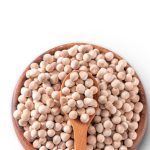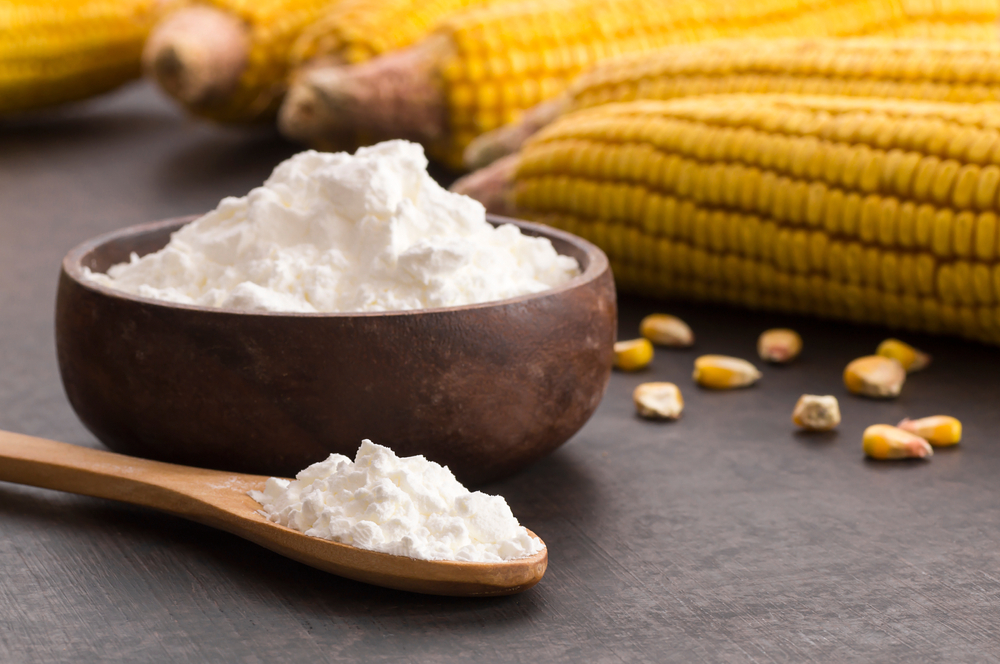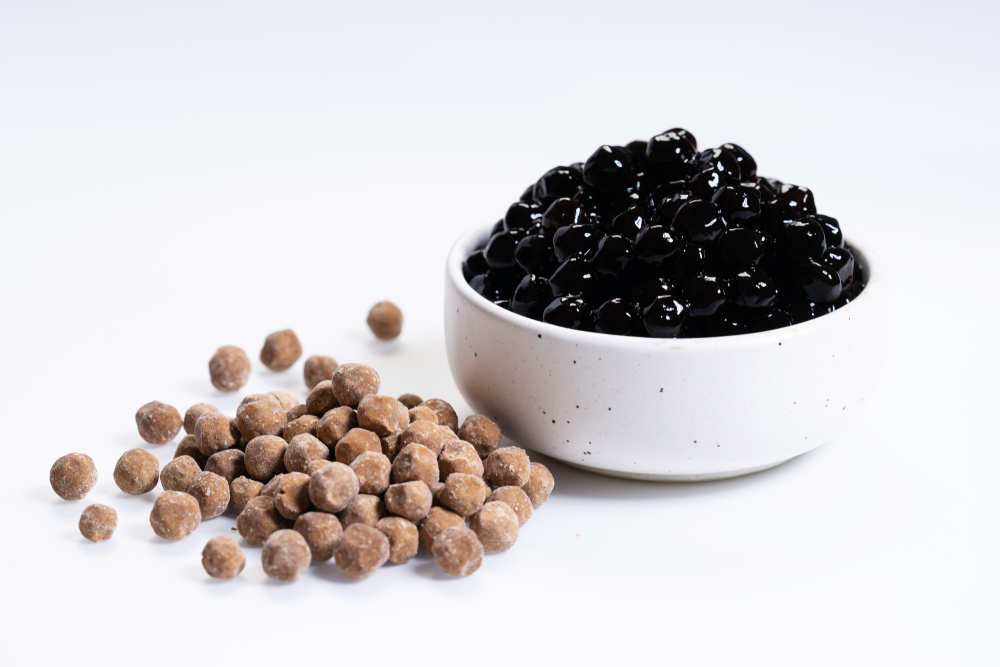Creating homemade bubble tea is a fun and delicious experiment! If you have run out of store-bought tapioca pearls, or tapioca starch to make them from scratch, you can still create boba drinks without a trip to the market. Cornstarch is a pantry staple that works well as a backup option.
Which Starch Is Boba Usually Made With?
Traditional boba pearls are made from a fine white powder derived from the cassava root called tapioca starch. Producers let the pulp dry after soaking, kneading, and straining the vegetable to give it a gritty texture. This process contributes to the chewy texture of the tapioca ball. Tapioca starch has a somewhat sweeter flavor than other starches, making it an excellent starch for most dessert recipes.
Other than the most common varieties of brown sugar boba and black tapioca pearls, these gooey balls can also be transformed into different colors by adding food coloring and flavorings, because they are translucent.
Print
Cornstarch Boba Pearls
- Total Time: 35 minutes
- Yield: 1 cup 1x
Description
No tapioca starch? No problem. The texture of cornstarch boba is not exactly what you would expect in a boba milk tea, but the cooking process is nearly identical and the result is delicious.
Ingredients
- 6 tbsps corn starch
- 10 1/2 tbsps dark brown sugar/muscavado (2 1/3 tbsps separated)
- 4 cups water (1/3 cup separated)
Instructions
- Put 2⅓ tbsps of sugar and ⅓ cup of water in a saucepan (not over heat). Stir until completely combined.
- Add the cornstarch. Stir until there are no lumps left. Place the saucepan over low heat. Stir continuously until a soft round dough is achieved.
- Remove from heat and place the dough on a clean, flat surface. Flatten the dough using a rolling pin. Make strips with a knife or a dough cutter.
- Cut the dough strips into small pieces and roll each piece with your hands to make small balls- half an inch by half an inch.
- Lightly cover the balls with cornstarch to prevent them from sticking to each other. When done, put the balls in a strainer to sift and remove the excess cornstarch from the balls.
- Pour 2 ⅔ cups of water into a pot and bring it to a boil.
- Pour the boba pearls into the boiling water. Stir continuously to prevent them from sticking to the bottom of the pan. Cook for 3 minutes.
- Remove the pot from the heat. Put the boba pearls in a bowl with cold water to prevent them from cooking further. Drain with a strainer. Set aside.
- Put 8 tbsps of dark brown sugar or muscovado in a saucepan. Add 1 cup of water and stir the mixture until the sugar is completely dissolved.
- Heat the mixture on medium heat. Add the cornstarch boba balls when the mixture is boiling. Boil the pearls for 6-8 minutes. Keep stirring to prevent the pearls from sticking together.
- Turn to low heat and cook for 5 minutes until the liquid has thickened and is syrup-like. Take the pan off the stove, put the syrup and tapioca balls in a bowl, and let them cool.
Notes
If you need to walk away from the dough at any point before cooking it, cover it with plastic wrap to prevent it from drying out.
The brown sugar syrup is optional but gives flavor to an otherwise bland tapioca pearl. If you don’t boil the pearls in the syrup, you’ll need to boil them in water for 6-8 additional minutes.
- Prep Time: 5 minutes
- Cook Time: 30 minutes
Are Tapioca Starch and Cornstarch the Same?
Because tapioca starch and cornstarch are both gluten-free, fine-grained starches, they can usually be substituted for one another. Although both can be used to thicken sauces, they also have distinctive qualities that affect the outcome.
| Cornstarch | Tapioca starch |
| Made from corn | Made from cassava root |
| Grain starch | Root starch |
| Can withstand high temperatures | Better in low-temperatures and short bakes |
| Creates an opaque, matte appearance | Creates a translucent, glossy appearance |
Either starch can be used when making fresh boba balls for milk tea. However, if you are making boba pearls to freeze and use at a later date, tapioca starch, yet again, is the preferred starch. Tapioca starch freezes well and holds its texture, while cornstarch loses its consistency in the thawing process.

Does Cornstarch Boba Have a Different Flavor or Texture?
Both cornstarch and tapioca starch are relatively flavorless. Both options absorb the flavor of whatever liquid or syrup they are steeped in. The main difference you will find when using each ingredient to make boba pearls is the difference in texture. Tapioca pearls are chewy, soft, and slimy. Cornstarch boba pearls are opaque and soft but not as pliable.
Using tapioca starch will yield better results, texture-wise.
What Other Starches Can I Use?
There are multiple options you can substitute in place of tapioca flour. As they come from different sources, you may find that the preparation and cooking time will also vary. Conducting taste and texture tests every couple of minutes minutes is recommended when using a new recipe to make homemade boba pearls.
A few options include:
- Arrow Root
- Potato Starch
- Cornstarch
- Rice Flour
- Cassava Flour
- All-Purpose Flour (or Whole Wheat)
- Gluten-Free Flour Mixes

